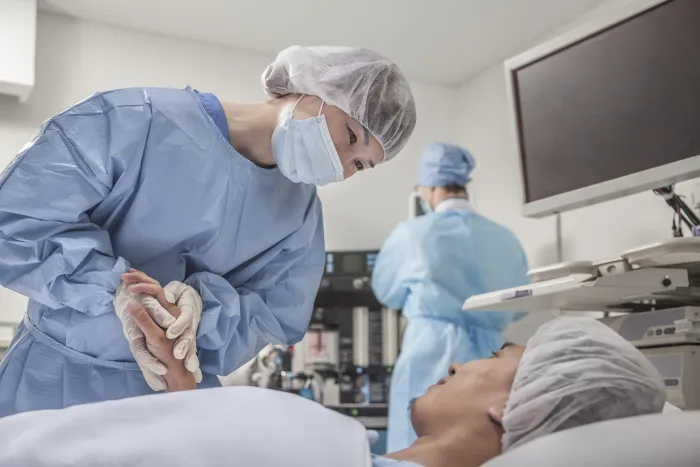SURGICAL SPINE TREATMENT
Neck Surgical Procedures
Cervical Spine (Neck) Surgery is most commonly performed for degenerative conditions or injuries of the neck that lead to pinched nerves. These spine conditions include herniated discs, spinal stenosis, spinal arthritis (spondylosis), and degenerative disc disease. Typical symptoms include neck pain and radiculopathy, which is radiating arm pain, numbness or weakness caused by pinching of the spinal cord or spinal nerves.
For cervical radiculopathy caused by a herniated disc, surgical options may include a posterior cervical foraminotomy or cervical artificial disc replacement. For conditions where there is more significant disc degeneration or arthritis, a spinal fusion may be needed. Learn more about the different surgical neck procedures in our patient education center.
Low Back Surgical Options
Lumbar Spine (Back) Surgery is most commonly performed for degenerative conditions or injuries of the back that lead to pinched nerves. These conditions include herniated discs, spinal stenosis, spinal arthritis (spondylosis), scoliosis, spinal instability, and degenerative disc disease. Typical symptoms include lower back pain and radiculopathy, which is radiating leg pain, numbness or weakness caused by pinching of the spinal cord or spinal nerves.
For lumbar radiculopathy caused by a herniated disc, bone spur or spinal stenosis, surgical options may include a microdiscectomy, laminectomy, minimally-invasive microdecompression, or endoscopic discectomy. For conditions where there is spinal instability, scoliosis, or severe disc degeneration and arthritis, a spinal fusion may be needed. The spinal fusion may be done through a minimally-invasive technique such as minimally-invasive TLIF or lateral interbody fusion (XLIF or LLIF). To learn more about surgical options for the back, view our list of surgical spine procedures.

